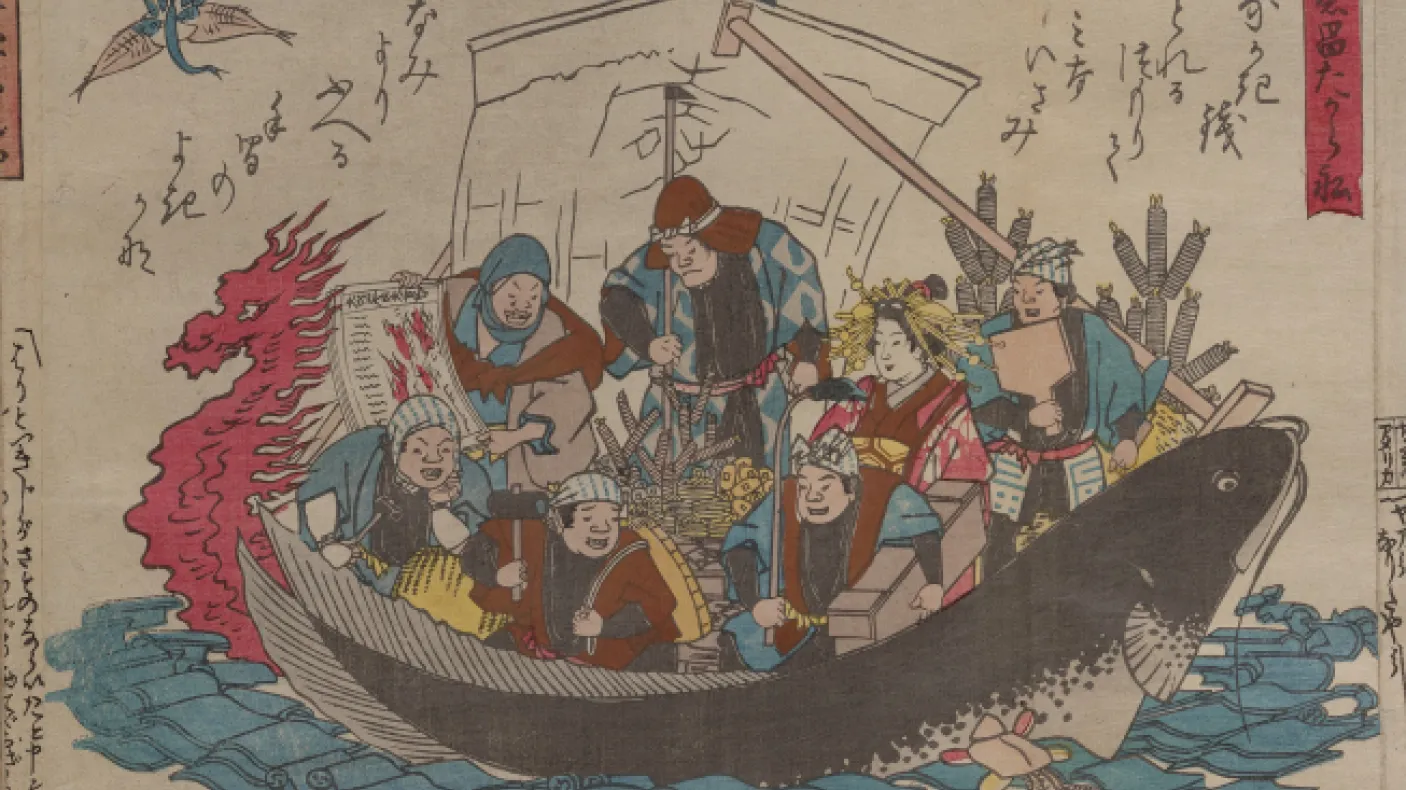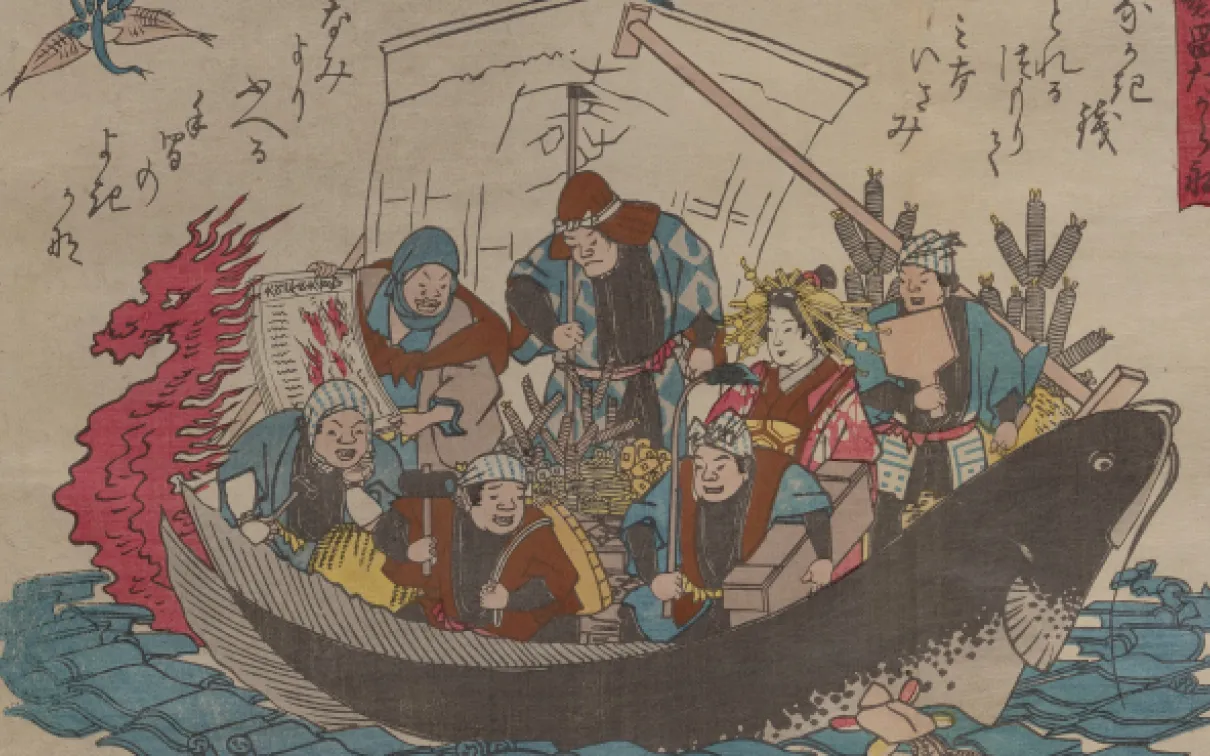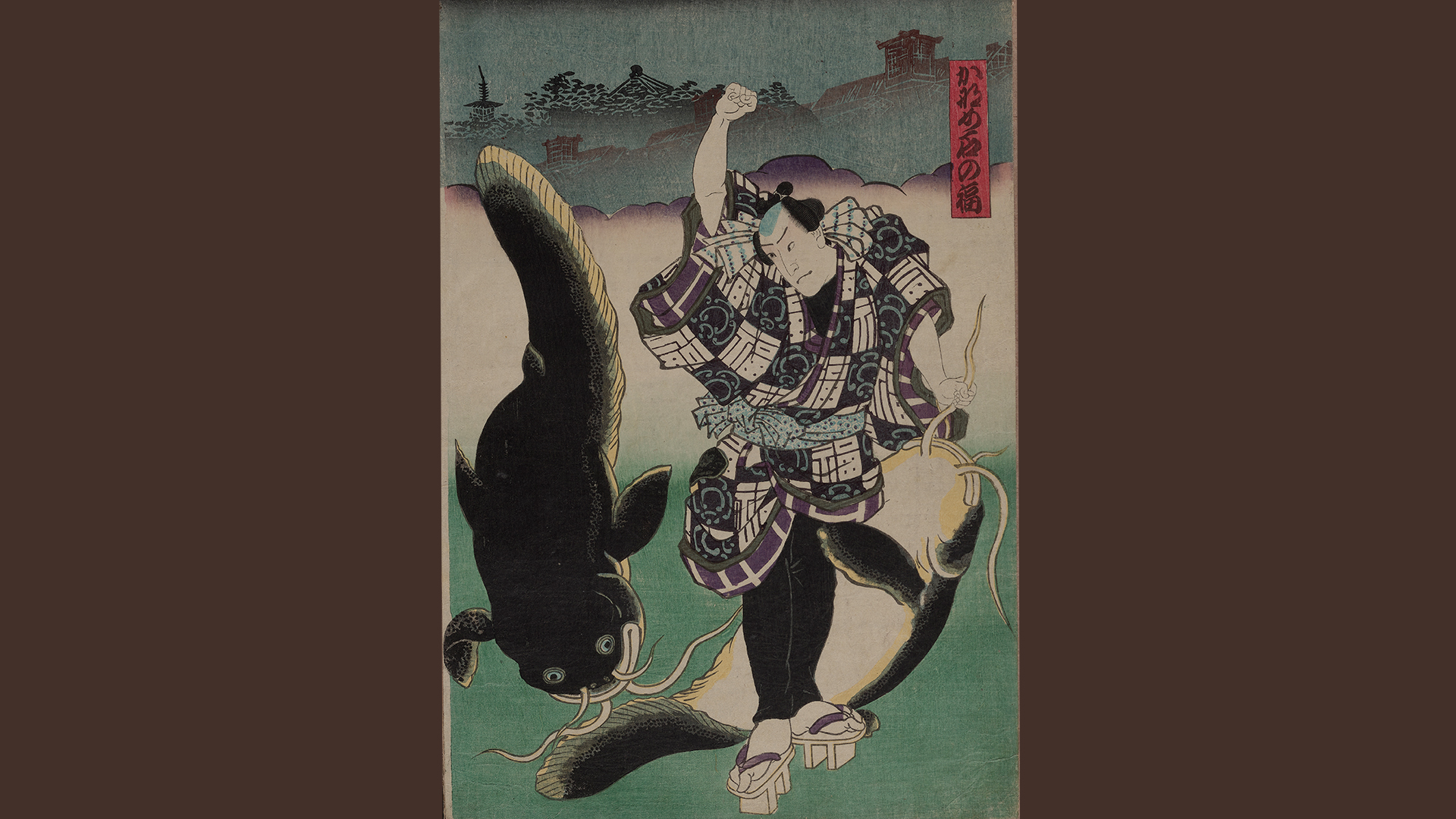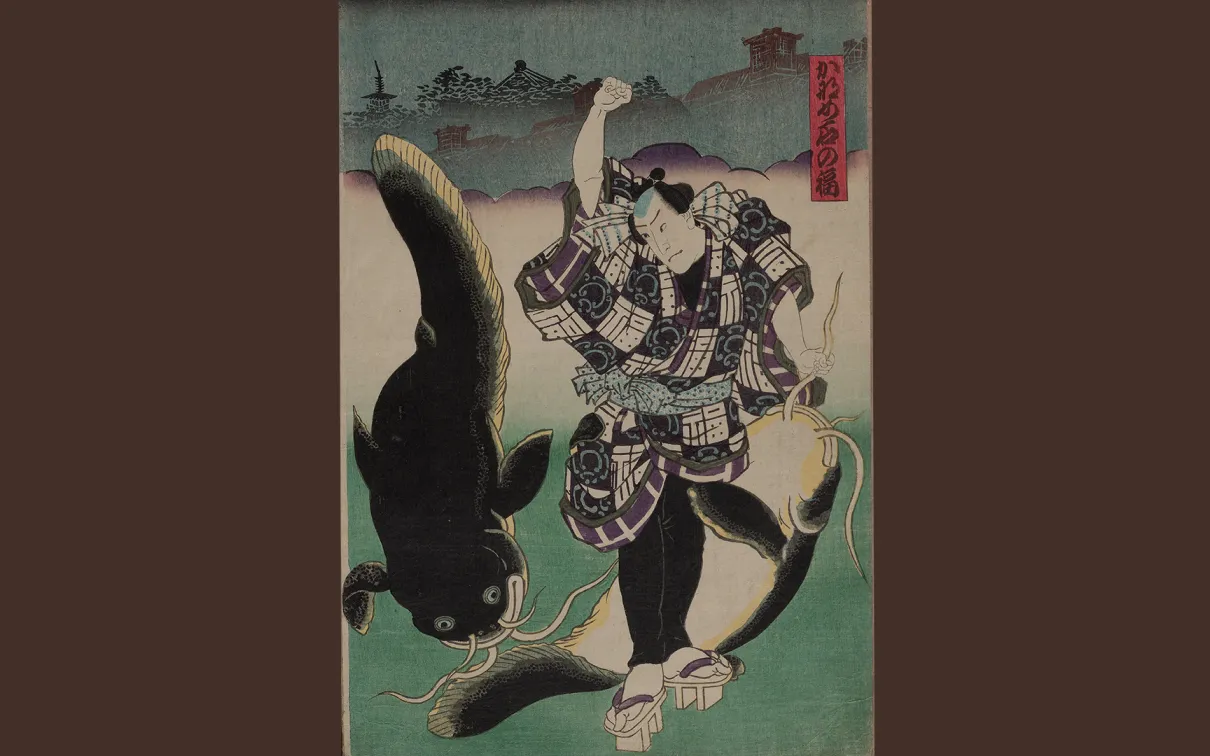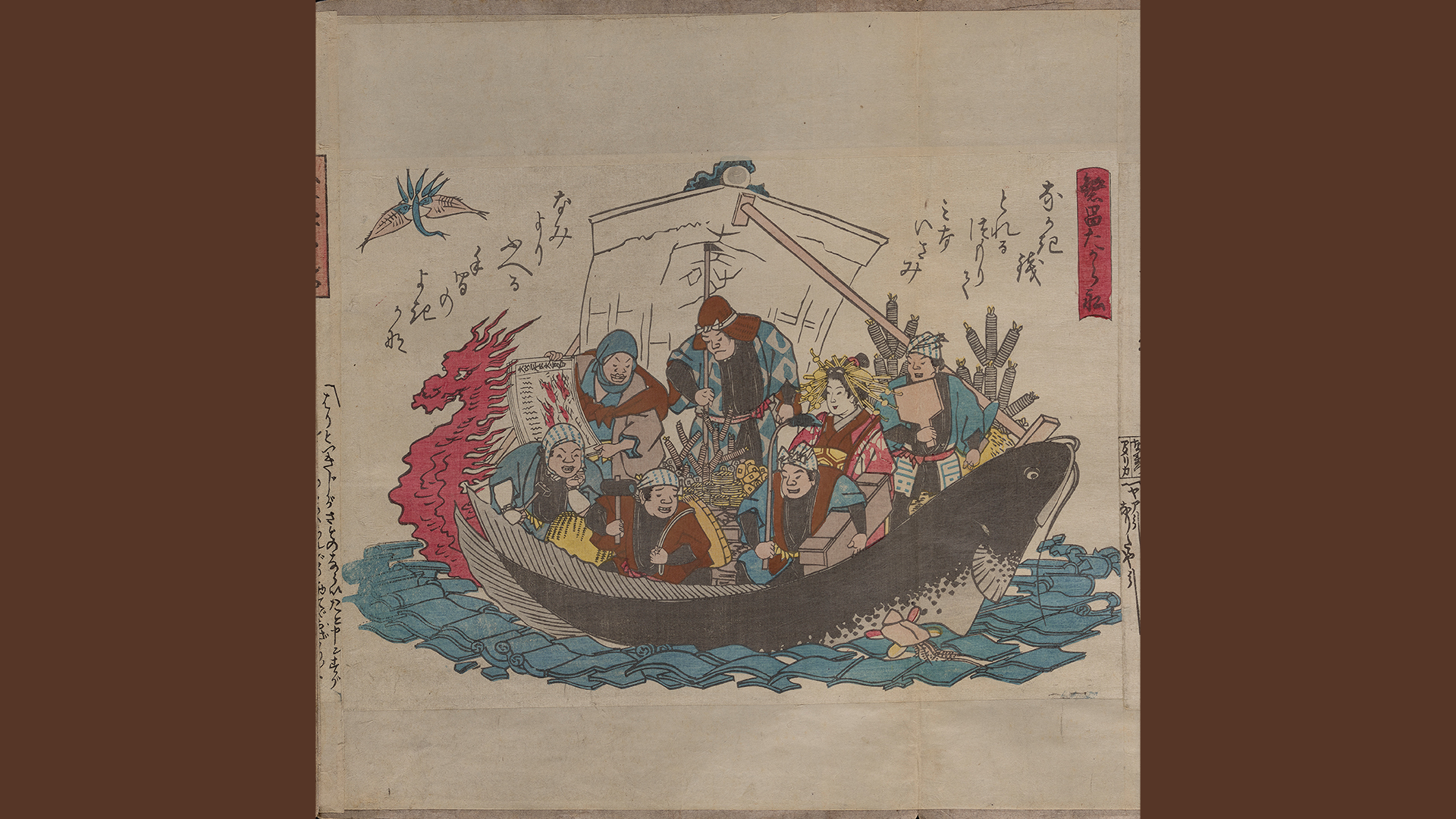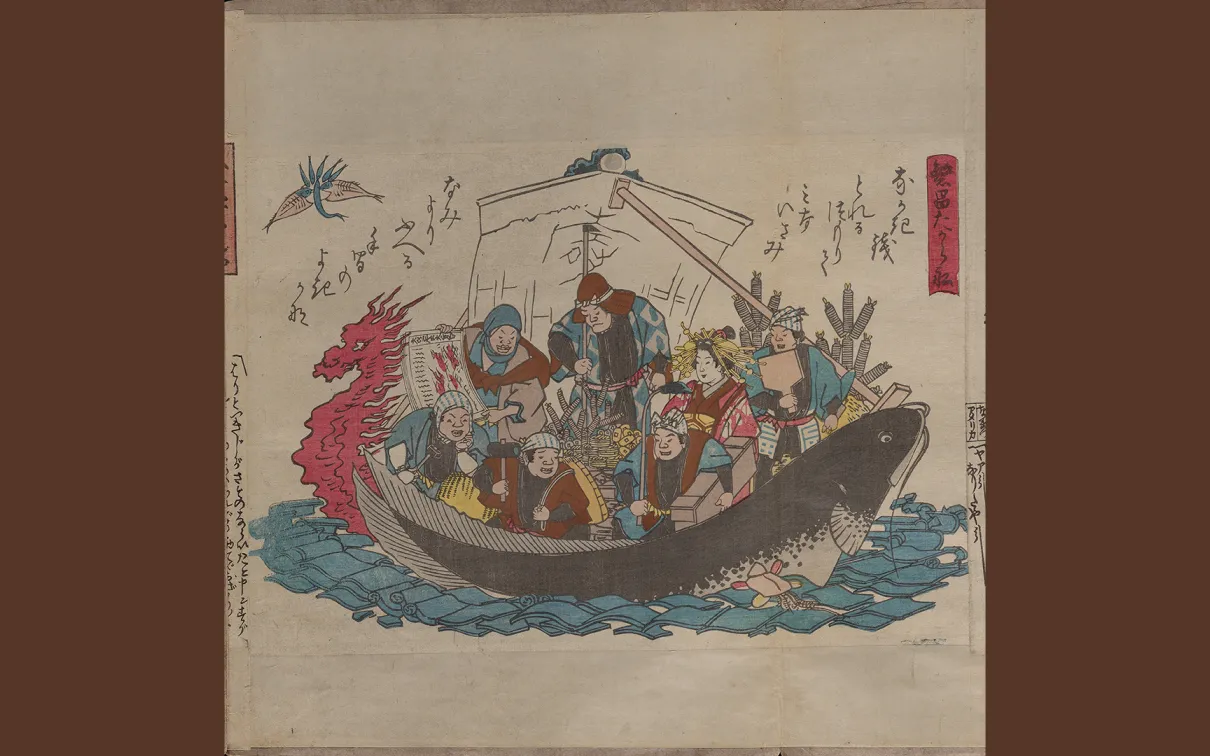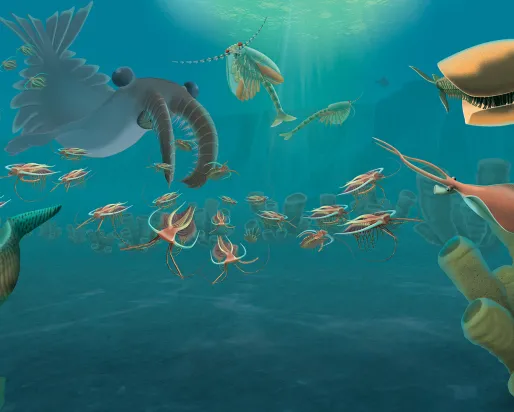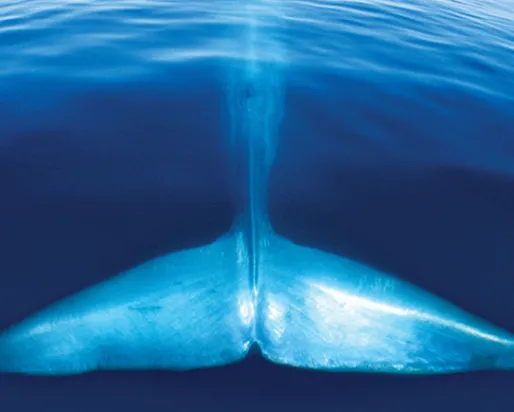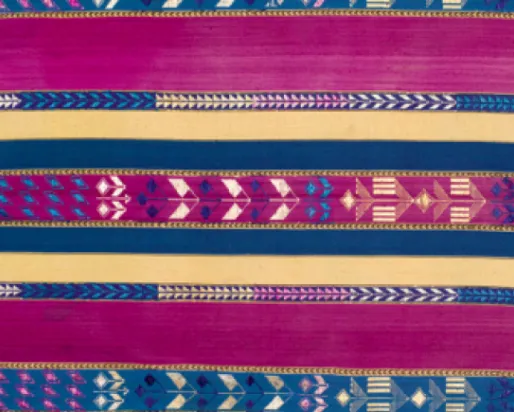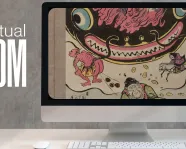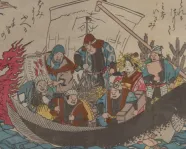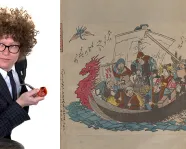Aftershocks
Japanese Earthquake Prints
Location
Admission
Audience
About
When disaster strikes, humour heals.
In 1855, the Ansei Great Earthquake struck and heavily damaged the city of Edo (modern day Tokyo). When it happened, the people of Edo turned to cheaply produced and widely distributed prints — namazu-e (catfish) prints — to help make sense of the disaster.
These firsthand accounts acted as the social media of the day, communicating the extent and immediate aftermath of the earthquake. In circulation for only a very short time, they played — and continue to play — an important role as superb examples of satire in the face of crisis.
Over 45 colourful woodblock prints are presented in an online exhibition that highlights ROM's exceptional collection of namazu-e earthquake prints.
Accessible through three thematic portals: Shaking Foundations, A Spectrum of Emotions, and A Fleeting Hope for Change, discover how these satirical prints helped Edo's inhabitants learn about the impact of the earthquake, make sense of what happened, cope with the resulting loss and social inequalities, and rally as a community to recover and move forward. Using classical satirical methodology and bold artistry, the prints teased sorrow, humour, anger, and ultimately healing from the public who saw them.
Aftershocks: Japanese Earthquake Prints presents a unique platform to explore the legacy of a community's response to disaster, making connections with our own experiences with social media and the resilience of the human and creative spirit in the face of ever-changing dynamics between nature, humans, and societies.
Partners & Sponsors

